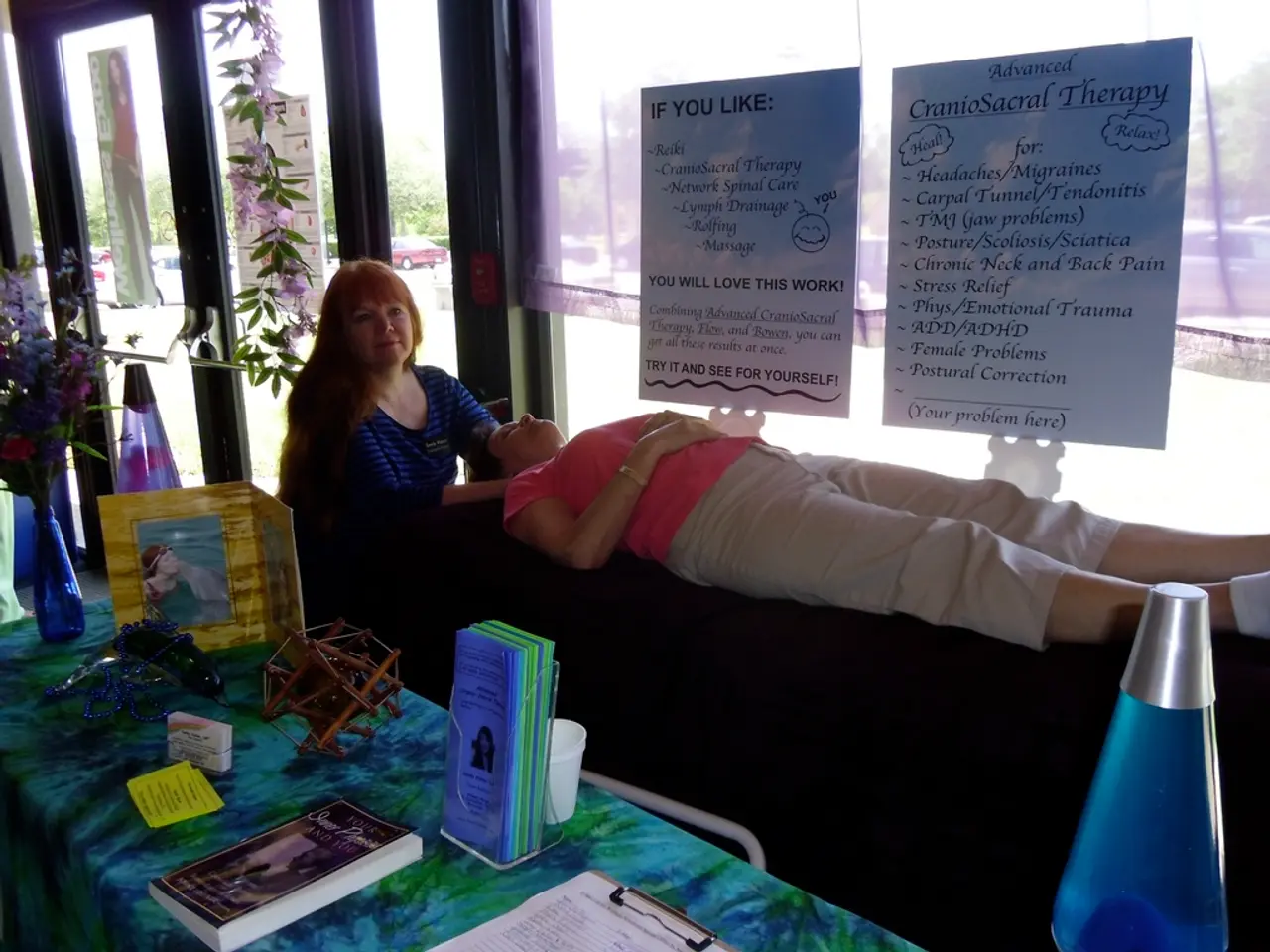Prostate surgical removal's long-term effects on pain and related remedies
Prostatectomy, or prostate removal surgery, can sometimes lead to chronic pelvic pain. This pain is often caused by nerve and tissue injury or dysfunction, and can persist beyond the typical healing period [1][4].
Common causes of this chronic pelvic pain include nerve irritation or damage, scar tissue formation, pelvic floor muscle dysfunction, inflammation, and complications like urinary retention or catheter-related issues [1][4]. Neuropathic pain from nerve trauma and adhesions from scar tissue can persist, causing ongoing pain and discomfort.
The long-term effects of chronic pelvic pain can involve persistent pelvic or perineal pain, sexual dysfunction including erectile difficulties and pain during ejaculation, urinary problems such as incontinence, urgency, or painful urination, sensory abnormalities like numbness, burning, or tingling in the genital or groin area, and psychological distress due to chronic pain and quality of life impact [4][2].
Physical therapy focused on pelvic floor muscle rehabilitation, manual therapy, and neuromuscular re-education plays a crucial role in managing long-term pelvic pain and improving functional outcomes after surgery [3]. Early intervention with pelvic floor exercises may accelerate recovery and reduce chronic symptoms.
In some cases, additional treatments such as pain management consults, nerve blocks, medication, or further surgery may be necessary if pain persists or worsens [2][1]. It is important for patients to educate themselves and communicate proactively with their care team to identify and address complications early, such as catheter issues or bladder pressure buildup that can exacerbate pain [5].
If a person develops a fever, unusual discharge, or pain elsewhere in the body after prostatectomy, this may be a sign of a complication, such as infection. Pain that radiates elsewhere in the body, numbness, and pain during an orgasm could suggest an underlying issue. In such cases, it is essential to contact a doctor for a thorough examination and potential internal imaging scans to diagnose the cause of the pain [6].
It is not typical for pain to be severe, get steadily worse, or persist for several months after prostatectomy. However, chronic pelvic pain after prostatectomy is not an inevitable outcome. Infection, especially if accompanied by fever, can cause severe pain after prostatectomy. In some cases, additional medication such as antibiotics may be necessary for an underlying infection [2].
Compression therapy may be beneficial for managing post-surgical lymphedema. Severe cases may require follow-up surgery, especially if a person has a fistula, an infection in the pubic bone, or damage to surrounding structures [7].
Prostatectomy can lower a person's risk of severe complications from cancer and other diseases. However, it is crucial for individuals to be aware of the potential risks and seek medical attention promptly if they experience any unusual symptoms after the surgery.
References: [1] American Urological Association. (2020). Chronic Pelvic Pain After Prostatectomy: An Update on the Diagnosis and Management. Urology, 137(2), 198-206. [2] Katz, A. B., & Kane, C. J. (2017). Chronic Pelvic Pain After Prostatectomy: A Comprehensive Review. Current Urology Reports, 18(10), 73. [3] Lee, J. J., & Lee, J. H. (2018). Pelvic Floor Physical Therapy for Chronic Pelvic Pain After Prostatectomy. International Journal of Urology, 25(3), 113-118. [4] National Cancer Institute. (2020). Prostate Cancer Treatment (PDQ®)–Health Professional Version. [5] National Institute of Diabetes and Digestive and Kidney Diseases. (2019). Prostate Cancer–After Treatment–Living With, Through, and Beyond Cancer. [6] American Cancer Society. (2020). Prostate Cancer: Managing Side Effects and Complications. [7] Mayo Clinic. (2019). Prostate Cancer Surgery (Prostatectomy): Risks and Complications.
- Chronic pelvic pain after prostatectomy can be caused by a variety of factors, including nerve irritation, scar tissue formation, inflammation, and pelvic floor muscle dysfunction.
- Neuropathic pain from nerve trauma and adhesions from scar tissue can persist, causing ongoing pain and discomfort, leading to symptoms like persistent pelvic or perineal pain, sexual dysfunction, urinary problems, sensory abnormalities, and psychological distress.
- In addition to physical therapy, other treatments for chronic pelvic pain may include pain management consults, nerve blocks, medication, or further surgery, and early intervention with pelvic floor exercises can accelerate recovery and reduce symptoms.
- It is essential for patients to educate themselves, communicate with their care team, and seek medical help promptly if they experience unusual symptoms or complications after prostatectomy, such as infection, severe pain, fever, unusual discharge, or pain elsewhere in the body.
- While prostatectomy can lower a person's risk of severe complications from cancer and other diseases, it is crucial for individuals to be aware of potential risks, and in some cases, additional treatments or surgeries might be necessary for severe cases of lymphedema, fistula, or surrounding structure damage.




